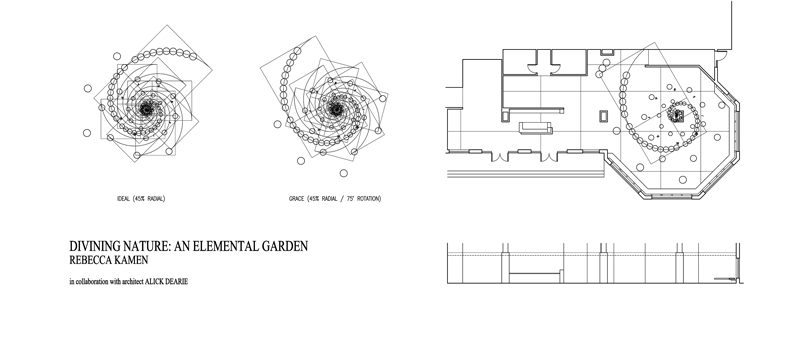In 2007 the Periodic Table entered into my consciousness. Memory of the Table took me back to 11th grade chemistry class, a magical room full of mysterious smells, test tubes, Bunsen burners and that rigid, gridded chart of letters and numbers hanging in the front of the room. Now decades later, this mystifying chart has re-entered my thoughts, demanding another look – but this time, through the eyes of an artist.
The genesis of this project has taken me on the most remarkable journey. Travels to India and Bhutan, as well as researching rare alchemy books at the Chemical Heritage Foundation in Philadelphia, have informed this project in ways I could never have imagined back in high school. Powerful relationships started emerging, becoming the catalyst for exploring the Periodic Table as a bridge between art and science.
Buddhist mandalas, representing a cosmological view of the Universe, inspired the layout and the concept for an elemental garden. Because gardens have always served both functionally and metaphorically as an intersection of art and science with nature, they are sites of transformation. In these awe-inspiring places, matter changes from one state to another. Similar to the metamorphosis of an atom that becomes a new element when the number and arrangement of its parts changes, Divining Nature: An Elemental Garden transforms chemistry’s Periodic Table of letters and numbers into a garden of sculptural elements based on geometry and atomic number.
The exhibition has two components: a small, introductory installation based on Plato’s five original elements, and a large sculptural installation inspired by the eighty-three naturally occurring elements in the Periodic Table. Two architects played a significant role in the development of this project. Dialogues with Jiyun Park were instrumental in thinking about the Periodic Table in new ways. Alick Dearie assisted in manifesting my vision of placing the elements of each column of the Table on separate but overlapping Fibonacci Spirals, creating the layout for the installation.
During the conceptualization phase of this project, a sound component was envisioned as part of the installation. Bio-musician Susan Alexjander, with her haunting soundscape inspired by the wave frequencies emitted from atoms in the elements was the perfect collaborating partner for this aspect of the project. Sound adds a whole new dimension to the experience of the sculpture and installation.
Divining Nature: An Elemental Garden represents an exciting challenge for me at this stage in my development as an artist. It provides an opportunity to create a large-scale installation exploring the Periodic Table as a three- dimensional object of beauty through sculptures inspired by the most ethereal aspect of an element – its orbital pattern. This project also celebrates the inter-connections of the Universe. Shapes created by these electron patterns are based on the same principals of Sacred Geometry that have inspired the Fibonacci spiral of the installation layout and are found in all aspects of nature.
Rebecca Kamen
